hi I'm Hannah, i'm a book lover, aspiring writer, and fantasy fan. ask me about my OCs
Last active 4 hours ago
Don't wanna be here? Send us removal request.
Photo

Twilight Fancast Charlie Hunnam as Carlisle Cullen
136 notes
·
View notes
Photo








$454,830/3 br
7200 sq ft
Navasota, TX
wood factory built in 1860
2K notes
·
View notes
Photo










$375,000/5 br
4400 sq ft
Gonzales, TX
1K notes
·
View notes
Link
64K notes
·
View notes
Quote
reasons not to kiss her 1.) this sort of love is not allowed. you are both too soft, and the world around you is all knives and chipped teeth 2.) no one ever taught you how to love. your war paint and scarred hands could never hold her like she deserves 3.) no one has ever loved you this full surely you would drown in it all 4.) she belongs in a museum, and you are merely here to gaze. look around you, all the signs scream ‘do not touch’ 5.) she touches you like youre fragile, and if you break you wont be able put yourself together again 6.) she is all bubblegum skies and chapped stick kisses, and you cannot watch the love run out of another persons eyes 7.) if you jump, she might catch you, and then youd have to watch as she tumbled through the dark 8.) her gaze is too gentle. you will not be the one to tell her that not everything can be fixed with a smile 9.) she is so good. she is so good, and you cannot ruin one more good thing 10.) you will not watch her crumble under the weight of your sins. she is too light, too breathless to be caught up in the dizziness of your heart reasons to kiss her 1.) she loves you, and her eyes are closed, and didnt your mother ever tell you not to leave a good thing waiting
lessons in listening to your heart, and not your head (via generalmercer)
18K notes
·
View notes
Text
How I write 10,000 words in a day
This is not a daily occurrence; 10,000 words in a day is a writing marathon that takes planning. It’s also not high-quality writing, but it is a good way to forge through the boring filler scenes I’ve been putting off and it gives me a lot of material on the page that I can later edit into something usable.
Preparation
I choose a day at least a couple of days, if not weeks, in the future that I can fully dedicate to writing. I plan ahead, make sure I clear my schedule, sort out snacks and meals for the day, and (if working at home) take care of the house work. This way, I have nothing else to think about or get distracted by.
I keep a note book of things I want to write about, typically just a bullet-pointed list of scenes that I have thought about. I am more of a freestyler than a planner, so that’s about as planned ahead as I ever get. I have a playlist ready to listen to, which I may or may not use.
On the day, I get up early and head to the gym, go for walk, anything that gets me active and away from my work space for at least an hour (I have tried it without the exercise and found that the day’s word count is always lower if I skip it). I have breakfast (a meal I often don’t really bother with). Shower. Clean clothes. Brushed teeth. All of these things, so I am awake and fresh.
The actual writing
I open a new document (which I save as “10K Day [date]”) and just start typing. Sometimes this means fragments of conversations I thought about while on the treadmill, sometimes it’s working on something from the notebook. Whatever I’m writing, the trick is to write it, no editing, no hesitations, no back spacing, not even for typos. I get myself into a groove and just keep going.
If I find myself a bit stuck, if my fingers haven’t hit the keys in the last thirty seconds, I hit the Enter key three times and start writing something else. 99% of the time, this something else will be a different scene within the same story, but every now and then I’ll jump to a different story entirely. If I can’t think of the word I want or need to name a new character, I will just type XXX and keep going.
I have my notebook next to me, so I can just work my way down my ‘to write’ list if I am having trouble thinking of what to write. Often, I start with the notebook but by the end of the day won’t be referring to it as much, mostly writing things I haven’t thought about before. This is when a lot of character development happens, unplanned quirks and descriptions slip in, and the next thing I know this character is gay and that one’s a red head (later, I go back and make sure these elements are consistent throughout the story).
I work in two-hour blocks, with twenty-minute breaks in between and one hour for lunch. Usually, I hit a wall at about 8,000 words around 4pm. When this happens I stop for an hour or two. Maybe go for another walk, maybe take a nap. I get back to it after dinner and pass the 10,000-word mark around 8:00pm. This is just me, I have friends who also do this and write much faster than I do, getting their 10,000 in half the time, and others who almost never actually hit the target. It doesn’t actually matter if they don’t though, they have still spent a day on their writing and made real progress.
My favourite way of doing a 10,000-word day is making it a social event. My old writing group used to reserve a private room in the library and bring our laptops. We followed the same schedule of twenty-minute breaks every two hours, and wouldn’t interact during writing time, except maybe silently passing around chocolate. Then, during the breaks, we would tell each other what we were writing about.
We first started doing this by taking part in a monthly 10K Day run by a writing blog, where you could log on and post updates through the day, and encourage each other. It was great, and I would love to post a link to the site, but it’s been a long time since I visited the website, and when I went looking for it today I couldn’t find it :(
Post-10,000 word day
A day or two after I have done a 10,000-word day, I edit what I wrote. Or if not edit, at least see what I can use. I sit down and scroll through, reading what I spewed onto the page, often feeling like it’s the first time I have seen those words.
I may not be able to use everything I wrote right away. E.g a piece of dialogue is from this WIP, but I don’t know when it happens so don’t have anywhere to put it in the story right now. These fragments stay untouched.
Anything I can use right away, I copy and paste into a WIP. I don’t delete anything I write, so anything I use I change the colour of in the 10K document so I end up with a rainbow of used text. This lets me see what has and hasn’t been used with minimal effort when I come back to the 10K document later on.
Inside my Writing Folder, I have a Used folder. Once everything in a 10K Day document has been used, I move the document to the Used folder. Until then, it sits in the main folder, ready for me to open it up and scroll through. It can stay there for a long time, especially if it has pieces from more than one story in it. Having it there means that when I have time to write but find myself unsure what I want to say I have a stock pile of pieces to use as a jumping off point.
443 notes
·
View notes
Photo

He Cong at Elie Saab Fall 2017 Couture
566 notes
·
View notes
Link
Nice article about why story submissions get rejected. Pretty useful things to keep in mind for writing fanfics and stuff! These are the sorts of things that make me just close the fanfic and move on. Haha.
3K notes
·
View notes
Text
How to Plot a Complex Novel in One Day
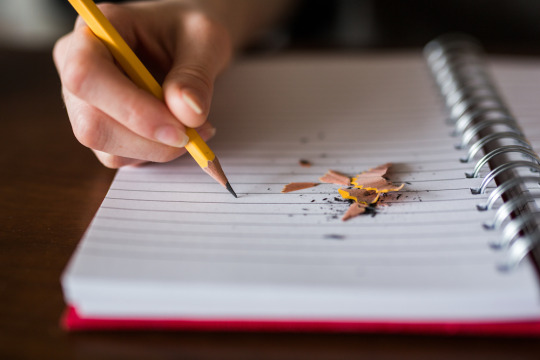
Now first, I have to say, that the plot you’re able to come up with in one day is not going to be without its flaws, but coming up with it all at once, the entire story unfolds right in front of you and makes you want to keep going with it. So, where to begin?
What is your premise and basic plot? Pick your plot. I recommend just pulling one from this list. No plots are “original” so making yours interesting and complicated will easily distract from that fact, that and interesting characters. Characters will be something for you to work on another day, because this is plotting day. You’ll want the main plot to be fairly straight forward, because a confusing main plot will doom you if you want subplots.
Decide who the characters will be. They don’t have to have names at this point. You don’t even need to know who they are other than why they have to be in the story. The more characters there are the more complicated the plot will be. If you intend to have more than one subplot, then you’ll want more characters. Multiple interconnected subplots will give the illusion that the story is very complicated and will give the reader a lot of different things to look at at all times. It also gives you the chance to develop many side characters. The plot I worked out yesterday had 13 characters, all were necessary. Decide their “roles” don’t bother with much else. This seems shallow, but this is plot. Plot is shallow.
Now, decide what drives each character. Why specifically are they in this story? You can make this up. You don’t even know these characters yet. Just so long as everyone has their own motivations, you’re in the clear.
What aren’t these characters giving away right off the bat? Give them a secret! It doesn’t have to be something that they are actively lying about or trying to hide, just find something that perhaps ties them into the plot or subplot. This is a moment to dig into subplot. This does not need to be at all connected to their drive to be present in the story. Decide who is in love with who, what did this person do in the 70’s that’s coming back to bite them today, and what continues to haunt what-his-face to this very day. This is where you start to see the characters take shape. Don’t worry much about who they are or what they look like, just focus on what they’re doing to the story.
What is going to change these characters? Now this will take some thinking. Everyone wants at least a few of the characters to come out changed by the end of the story, so think, how will they be different as a result of the plot/subplot? It might not be plot that changes them, but if you have a lot of characters, a few changes that are worked into the bones of the plot might help you.
Now list out the major events of the novel with subplot in chronological order. This will be your timeline. Especially list the historical things that you want to exist in backstory. List everything you can think of. Think about where the story is going. At this point, you likely haven’t focused too much on the main plot, yeah, it’s there, but now really focus on the rising actions, how this main plot builds its conflict, then the climactic moment. Make sure you get all of that in there. This might take a few hours.
Decide where to start writing. This part will take a LOT of thinking. It’s hard! But now that you’ve got the timeline, pick an interesting point to begin at. Something with action. Something relevant. Preferably not at the beginning of your timeline - you want to have huge reveals later on where these important things that happened prior are exposed. This is the point where you think about what information should come out when. This will be a revision of your last list, except instead of being chronological, it exists to build tension.
Once you’ve gotten the second list done, you’ve got a plot. Does it need work? Probably. But with that said, at this point you probably have no idea who half your characters are. Save that for tomorrow, that too will be a lot of work.
32K notes
·
View notes
Photo
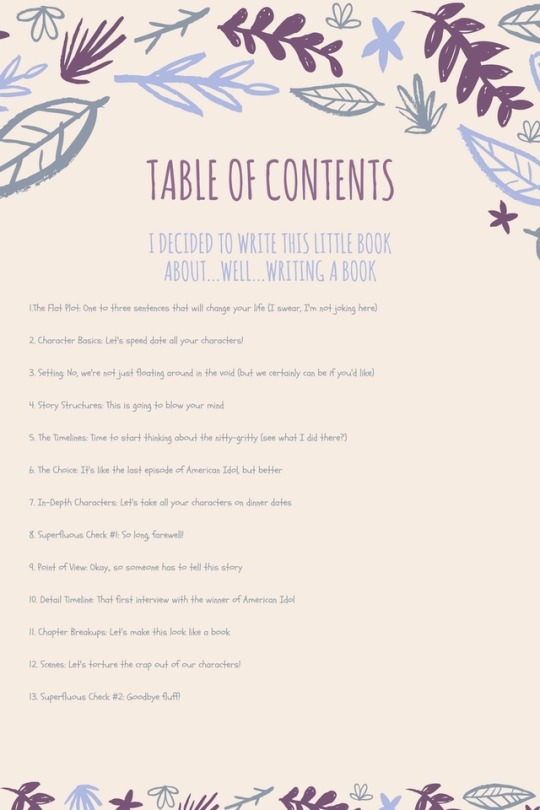
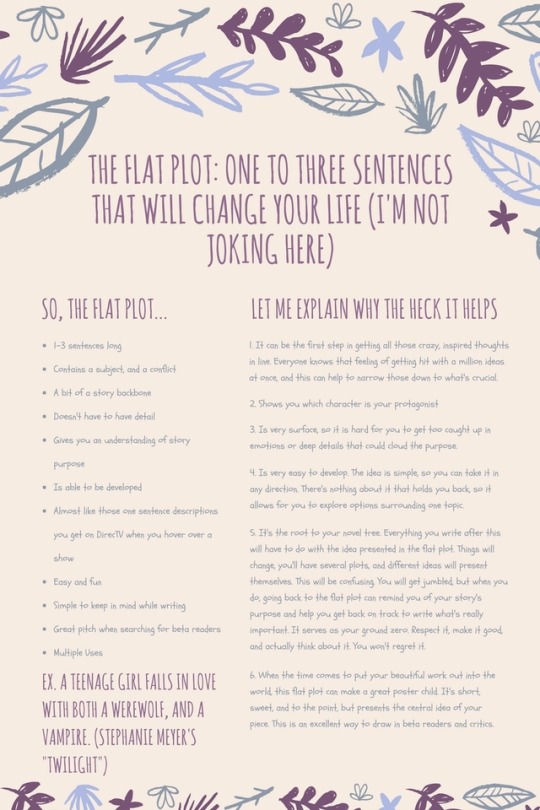
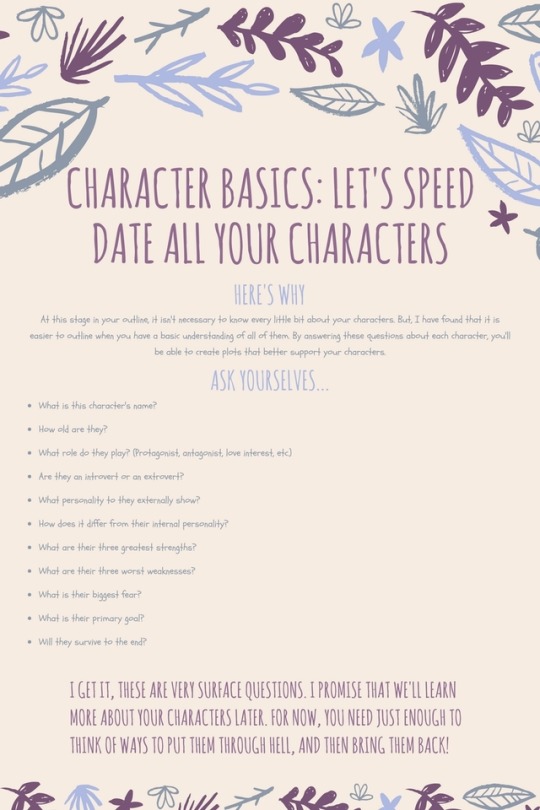
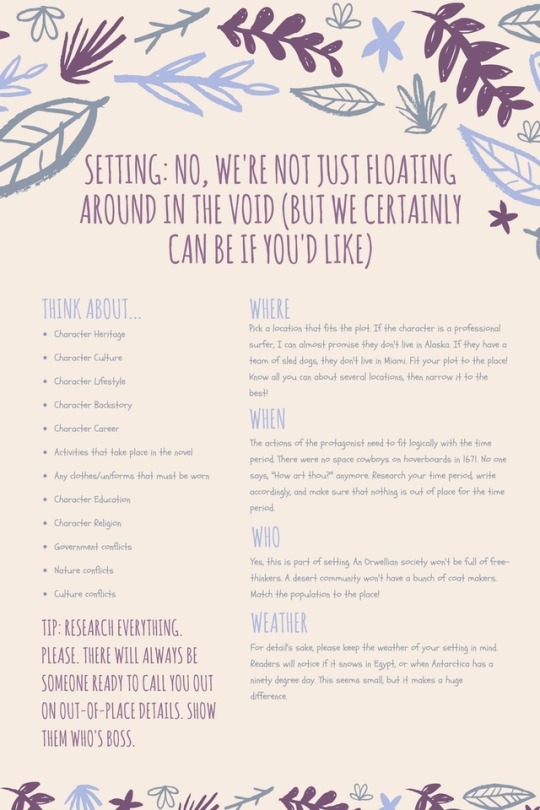
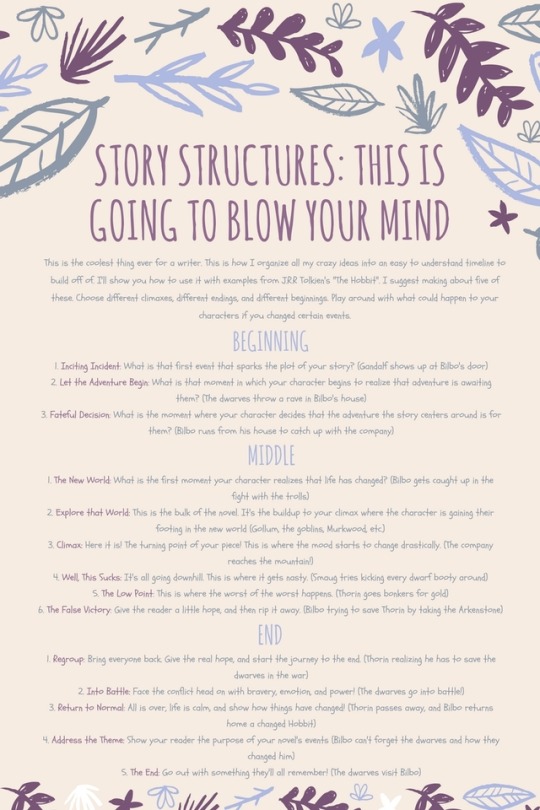
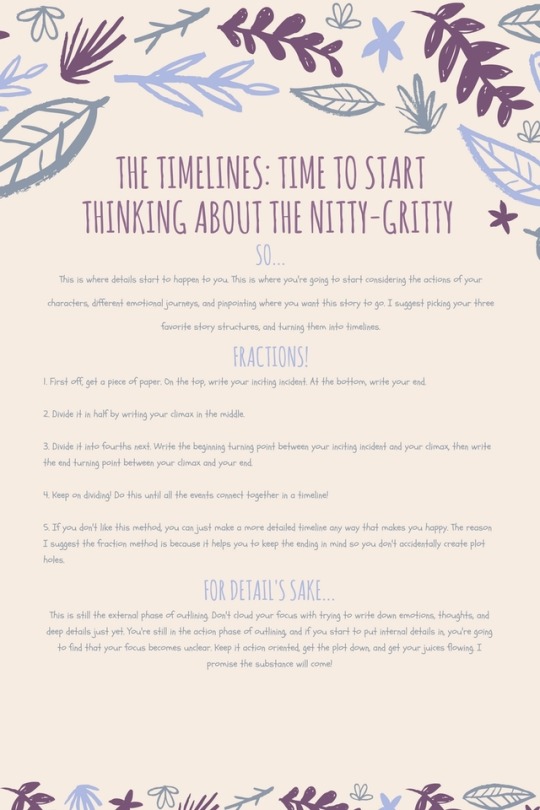
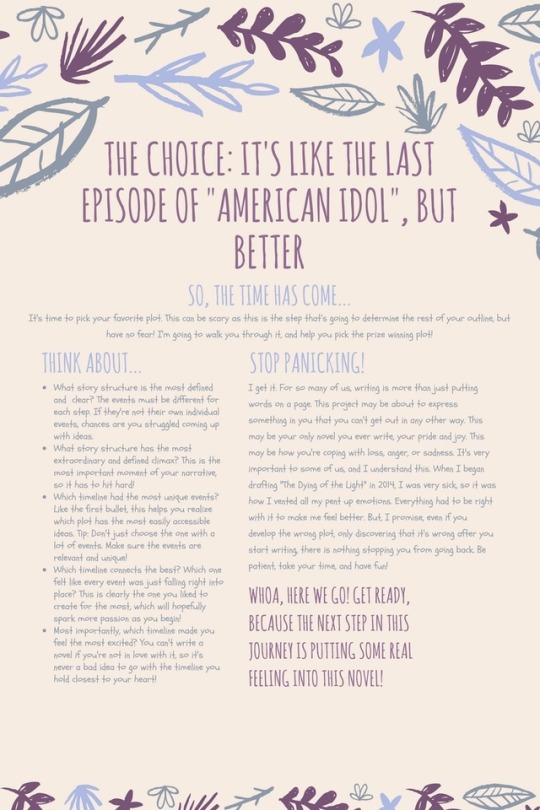
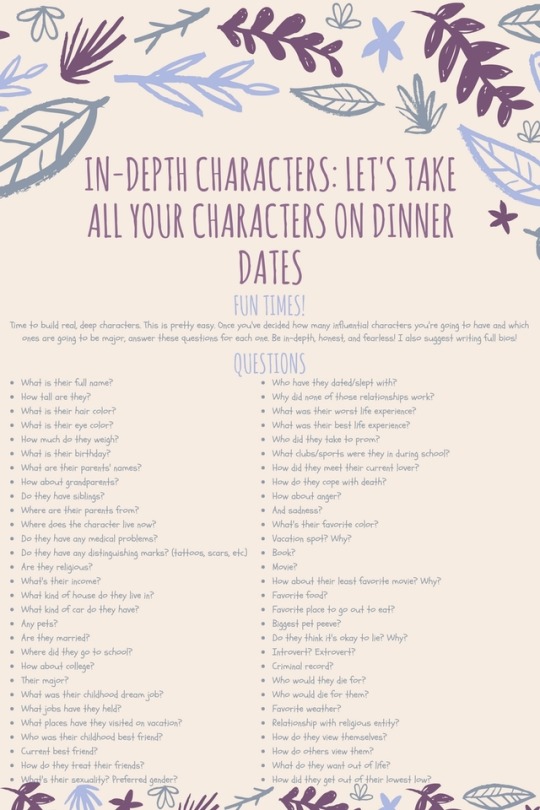
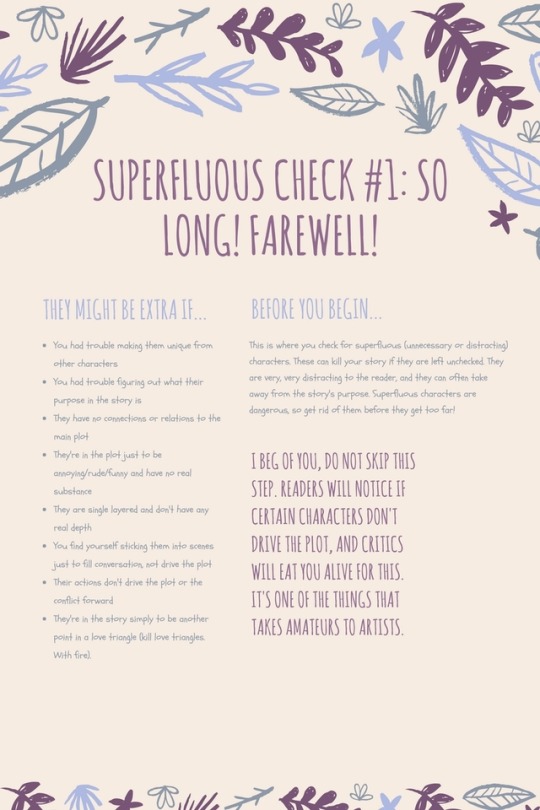
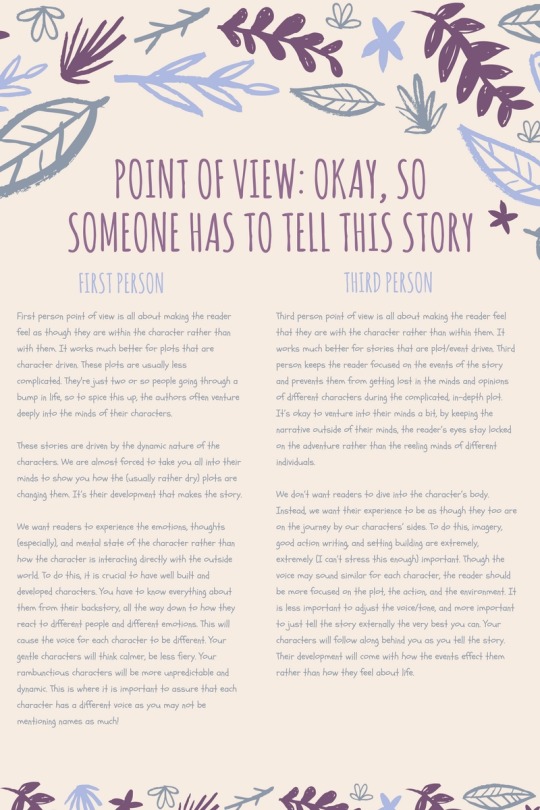
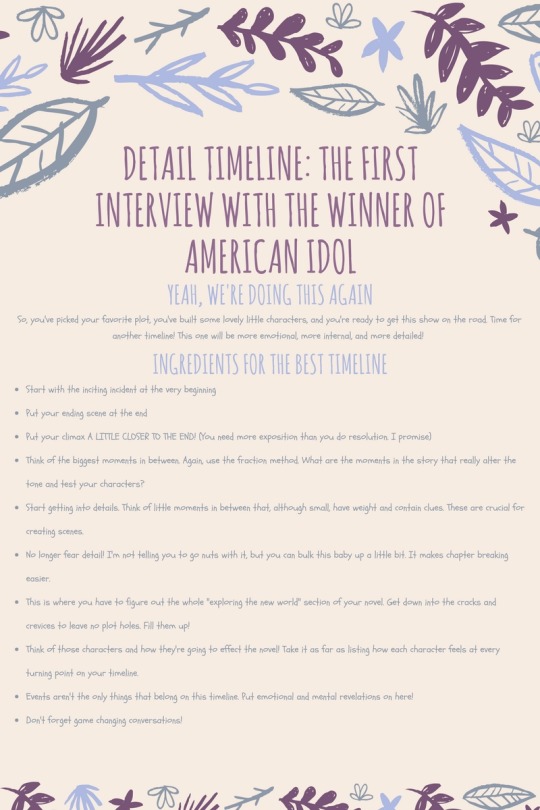
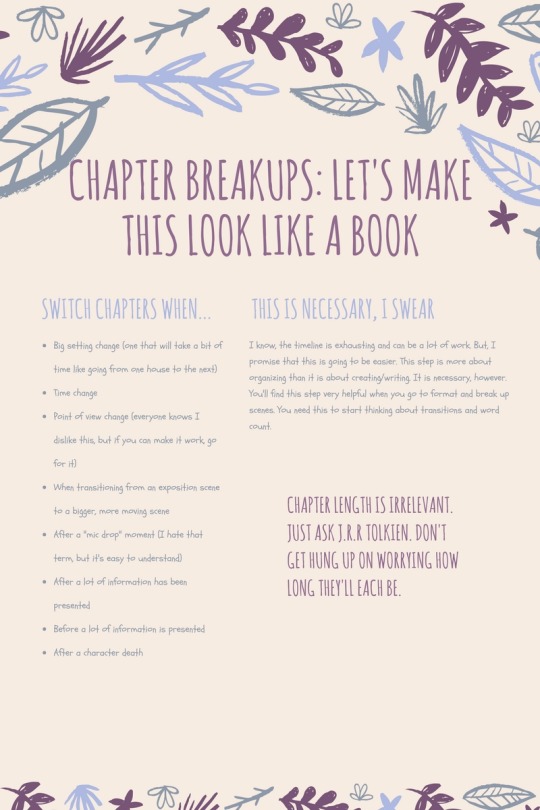
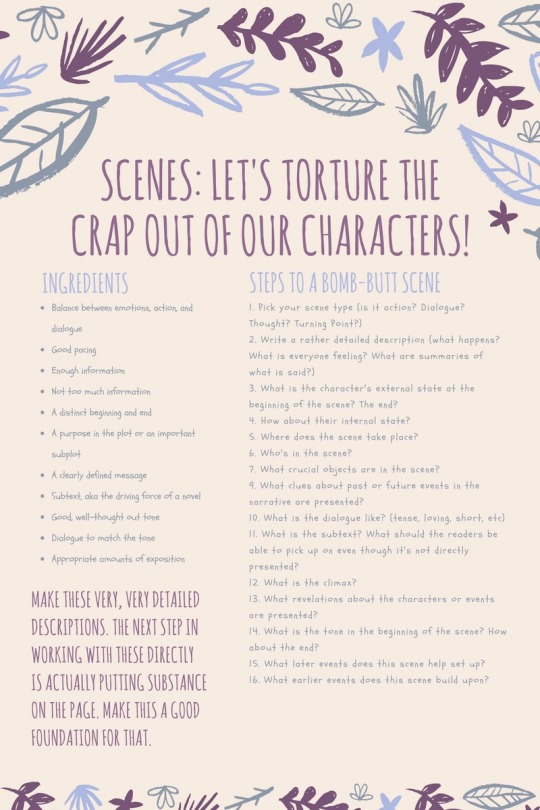
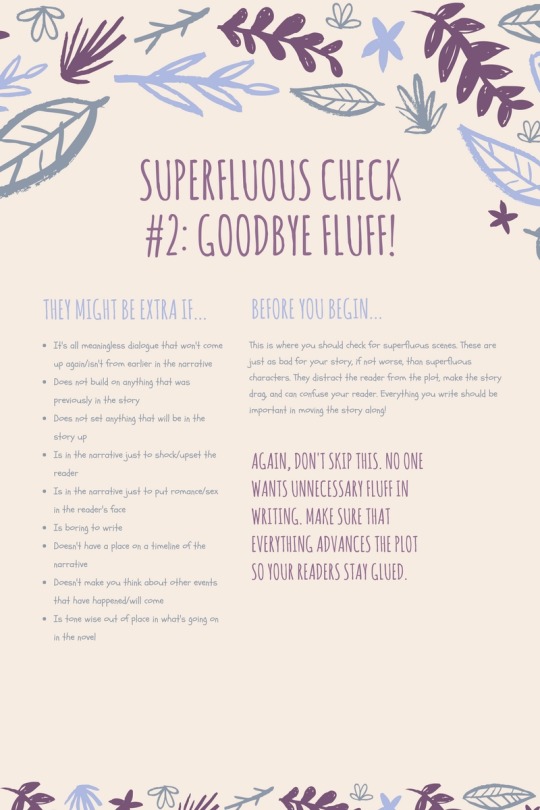
So, I heard that some of you were having issues with the download. Here’s my outlining guide just as is in photos. Same quality. Enjoy!
7K notes
·
View notes







































